Jewelry Trends for Gen Z
Jewelry design trends reflect the global environment, and how consumers are facing pandemic and post-pandemic life.
Forced to slow down and re-connect with our selves, other people and Mother Nature, with old and new beliefs, jewelry has become the expression of this new mindset and lifestyle.
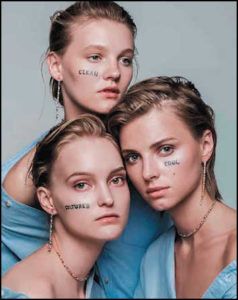
The Plumb Club’s latest Industry & Market Insights 2021 — developed with luxury trend-forecaster The Futurist, Paola DeLuca, and the quantitative statistical analysis survey firm, Qualtrics — profiles generational demographics and current trends, and unpacks the emerging design themes taking shape.
Young jewelry consumers are embracing design directions that are more gender fluid, sustainable, and symbolic, protective and optimistic, finds TPC research.
Gender Fluid
With fashion embracing androgynous styles and “unisex” becoming the buzzword for inclusion and diversity, there is definitely a strong crossover in jewelry for men and women, particularly among Gen Zers and Millennials.
Gender fluidity is a big part of the ongoing creative rebellion against pigeonholing wearers into boxes, finds TPC research. Wearable styles command a point of view and reflect personality. Traditional gender classifications no longer work. There is a strong, new wave of gender-neutral designs.
Novell Global has been focused on this design direction for Gen Y and Z, launching last year a line of commitment jewelry, BAE (Before Anyone Else), including delicate diamond promise rings. The collection offers traditional and nontraditional, gender nonspecific, scalable and stackable styles that can be mixed and matched, allowing consumers to co-create their jewelry.
Harry Fiorentinos, director of sales and marketing, shares that Novell’s latest 42-plain band ring display has been its most successful tool to help retailers and customers unlock the power of the band. “Yes, they can be wedding bands, but they also can be part of a cool stack, a thumb or index finger ring, or worn on a chain. We especially love seeing our plain bands paired with sparkly diamond bands. With the selection of widths, finishes and textures, the options are infinite. It’s a playground that lets the customer’s imagination run wild.”
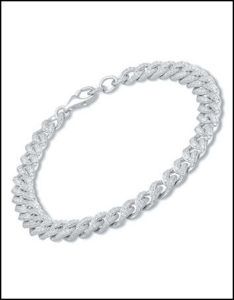
Androgynous expressions translate in many styles beyond the band ring, including signet rings, diamond stud earrings, dog tag pendants, charms, and link bracelets and necklaces, says Valerie Fletcher, vice president of design and product development for Original Design Inc. (ODI). “The pavé diamond Cuban link chain is a great example. Made in any size link and length, as a bracelet or necklace, everyone can wear this look.”
In fact, Fletcher says that men have become an increasingly important demographic for diamonds. “Men are looking for more unique and diverse options in wedding and fashion jewelry. Diamond pave studs make a great gift. They are gender neutral and can be worn alone, paired or stacked.”
TPC research finds that gender classifications of watches have become less relevant, as more women are buying men’s watches to attain a larger case size, while the trend towards larger sizes for men has declined in recent years.
If there’s one exciting trend that speaks to the embrace of gender fluidity in jewelry, it is men wearing pearls. This trend has gained traction with young male celebrities like Harry Styles and Jaden Smith. Hypebeast, men’s fashion portal, proclaims “2021 the year of everyone wearing pearls.” And last fall, the New York Times hailed pearl “a gateway to genderless fashion that emphasizes the very distinction it’s meant to dismantle.”
The audience for pearls is broader and more diverse than ever before, cheers Kathy Grenier, vice president, business development for the pearl house, Imperial. She notes that men are embracing pearl jewelry already on the market, like pearl studs, necklaces (choker strands, multi-strands and pearl with chain), stretch bracelets, and pins/brooches.
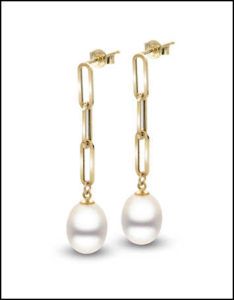 Sustainably Sourced
Sustainably Sourced
Pearls are not only genderless they also present a great story of sustainability, underscores Grenier, which makes them uniquely qualified to capture Millennial and Gen Z jewelry consumers. Responsibly cultured pearls are a renewable resource that also contributes to the health of the marine environment, and provides economic opportunities to families in remote communities.
Particularly popular in pearl jewelry have been pearls and links, with the paperclip style a strong trend in earrings and necklaces, says Grenier. Sarah Cuidon, marketing and communications for the pearl house, Mastoloni, finds pearl hoops a favorite, especially styles framed with tiny seed pearls or thin wire hoops that float or drop a freshwater pearl — affordable designs you can live in.
In a survey conducted for TPC Industry & Market Insights 2021 of 1,000 U.S. jewelry consumers, 20% rank it a 10, most important, that their jewelry be responsibly sourced, with the average rank a 6.5 in significance from a scale of 1 to 10. Nearly three quarters say they’d pay more for a product sustainably sourced, with more than a quarter indicating they’d pay a lot more.
In fact, environmental concerns are most pronounced for Gen Zers, with the survey revealing that they have bought, and intend to buy, less gold jewelry than their parents. A survey by the World Gold Council cites that 70% of consumers are interested in ethically sourced gold and its impact on the people who mine it.
Silver remains a popular metal for Gen Y and Z, as recent retail data from the Silver Promotion Service, finds the age group buying the most silver jewelry is 20 to 40 year olds.
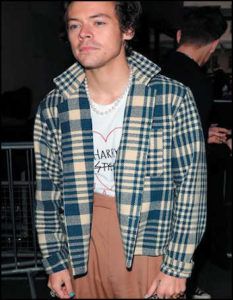
According to TPC consumer research, 74% of jewelry consumers (age 25-60) are interested in non-traditional jewelry materials, with colored gold and titanium most preferred. Research also reveals the importance of jewels that showcase nature themes or include natural materials like rough stones and wood.
Fletcher is thrilled ODI is launching a Greenland Ruby & Sapphire Collection at JCK Las Vegas. “As a member of the Taché Alliance, our strength has always been natural diamonds, but going into 2022, we wanted to offer something new that was natural, ethically sourced, and traceable from mine to market.”
From vivid red to pastel pink, and blue and purple hues, Greenland rubies and sapphires are mined, cut, and polished adhering to ethical, human rights, and environmental laws and responsible practices, says Fletcher. And, a portion of sales goes to The PinkPolarBear Foundation to support local communities, artisanal miners and wildlife. “Gen Zs are concerned with the impact of mining on the environment and local cultures, and that influences their purchases.”
This concern is also influencing Gen Y and Z to consider lab-grown diamonds. In fact, Cora-Lee Colaizzi, director of marketing and catalogs and senior merchandiser for Quality Gold in Fairfield, Ohio sees demand for lab-grown diamonds taking off beyond bridal to include basic stud earrings, solitaire necklaces and tennis bracelets, and men’s fashion/wedding bands. Young diamond buyers are drawn to lab-grown diamonds for the price, supply chain transparency, and environmental reasons.
TPC research finds consumers ready to embrace fashion jewelry made with lab-grown diamonds. Those actively shopping for fashion diamond jewelry expressed a high level of interest in lab-grown diamonds.
Symbolic, Protective and Optimistic
Symbolism is found in protective talisman and charms that have a globetrotter feel, finds TPC research. Red gemstones, like rubies are seen as a symbol of power and strength, while blue gems like sapphire bring a sense of calm.
There’s a wave of optimism, with consumers, particularly Gen Y and Z, drawn to uplifting, mood-boasting colors and playful designs. Think glossy enamel finishes with a digital feel and galvanic colored metals with diamonds.
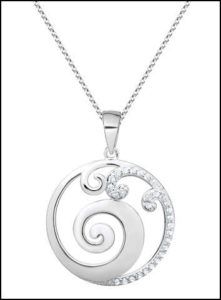 Barbara Barry for the Marathon Company, manufacturer of fine jewelry for children and adults, says sales have been extremely busy for inspirational jewelry, particularly religious symbols like crosses and medals. She also finds Millennials and Gen Z look to certain gems for their healing connection, citing as an example, the company’s LeStage Convertible Collection of bangle bracelets with interchangeable center clasps. The latest clasp designs — set with blue and green chalcedony, and lavender and rose quartz — have been especially popular.
Barbara Barry for the Marathon Company, manufacturer of fine jewelry for children and adults, says sales have been extremely busy for inspirational jewelry, particularly religious symbols like crosses and medals. She also finds Millennials and Gen Z look to certain gems for their healing connection, citing as an example, the company’s LeStage Convertible Collection of bangle bracelets with interchangeable center clasps. The latest clasp designs — set with blue and green chalcedony, and lavender and rose quartz — have been especially popular.
Happy, colorful pendants and charms, and playful designs like animals, emojis and symbols are all Gen Y and Z, says Fletcher. Think bright colored enamel, titanium and gold, multiple charm necklaces, mismatched earrings, macro links, huggie and hoop earrings, band and open rings, finds TPC research.
Leave a Reply
You must be logged in to post a comment.